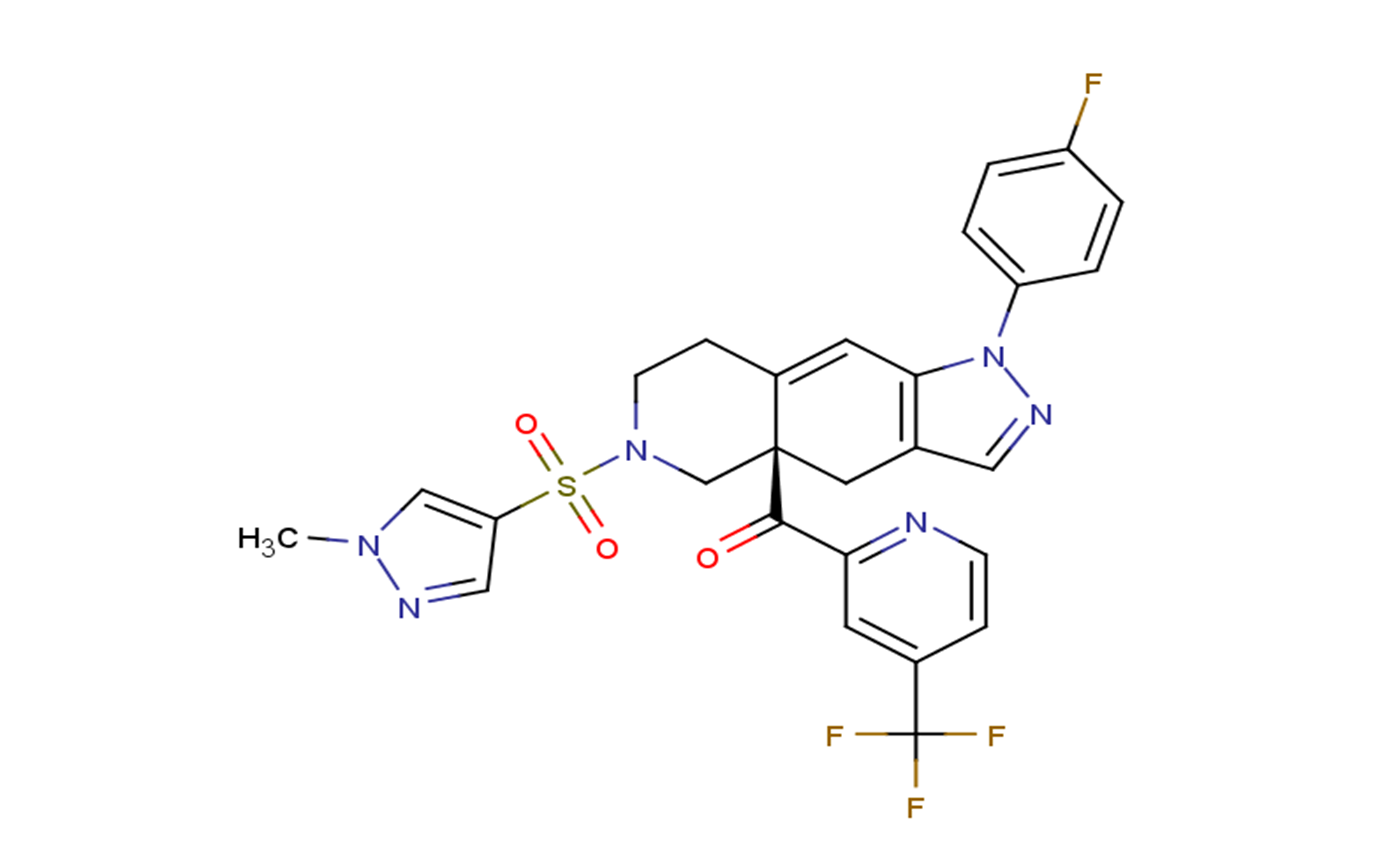
Relacorilant
CAS No. 1496510-51-0
Relacorilant ( CORT 125134 )
产品货号. M23647 CAS No. 1496510-51-0
Relacorilant 是一种选择性的、口服生物可利用的糖皮质激素受体拮抗剂。
纯度: >98% (HPLC)
 COA
COA
 Datasheet
Datasheet
 HNMR
HNMR
 HPLC
HPLC
 MSDS
MSDS
 Handing Instructions
Handing Instructions
| 规格 | 价格/人民币 | 库存 | 数量 |
| 5MG | ¥2284 | 有现货 |


|
| 10MG | ¥3629 | 有现货 |


|
| 25MG | ¥6051 | 有现货 |


|
| 50MG | ¥8505 | 有现货 |


|
| 100MG | ¥11502 | 有现货 |


|
| 200MG | 获取报价 | 有现货 |


|
| 500MG | 获取报价 | 有现货 |


|
| 1G | 获取报价 | 有现货 |


|
生物学信息
-
产品名称Relacorilant
-
注意事项本公司产品仅用于科研实验,不得用于人体或动物的临床与诊断
-
产品简述Relacorilant 是一种选择性的、口服生物可利用的糖皮质激素受体拮抗剂。
-
产品描述Relacorilant is a selective and orally bioavailable antagonist of glucocorticoid receptor(Ki of 7.2 nM in HepG2 TAT assay, and also shows Kis of 12, 81.2, 210 nM for rat, human and monkey glucocorticoid receptor in cell-based assay, respectively). Relacorilant has the potential for Cushing’s syndrome treatment.
-
体外实验——
-
体内实验——
-
同义词CORT 125134
-
通路Others
-
靶点Other Targets
-
受体Glucocorticoid receptor
-
研究领域——
-
适应症——
化学信息
-
CAS Number1496510-51-0
-
分子量586.56
-
分子式C27H22F4N6O3S
-
纯度>98% (HPLC)
-
溶解度DMSO:10 mM
-
SMILESCN1C=C(C=N1)S(=O)(=O)N2CCC3=CC4=C(C[C@@]3(C2)C(=O)C5=NC=CC(=C5)C(F)(F)F)C=NN4C6=CC=C(C=C6)F
-
化学全称——
运输与储存
-
储存条件(-20℃)
-
运输条件With Ice Pack
-
稳定性≥ 2 years
参考文献
1.Hunt HJ, et al. Identification of the Clinical Candidate (R)-(1-(4-Fluorophenyl)-6-((1-methyl-1H-pyrazol-4-yl)sulfonyl)-4,4a,5,6,7,8-hexahydro-1H-pyrazolo[3,4-g]isoquinolin-4a-yl)(4-(trifluoromethyl)pyridin-2-yl)methanone (CORT125134): A Selective Glucocorticoid Receptor (GR) Antagonist. J Med Chem. 2017 Apr 27;60(8):3405-3421.
产品手册




关联产品
-
2-Hydroxy-3,4,6-trim...
2'-Hydroxy-3',4',6'-trimethoxychalcone is a natural product for research related to life sciences.
-
5-Hydroxymethyl-2-fu...
5-羟甲基-2-糠醛存在于多种碳水化合物中。
-
1-O-trans-caffeoyl-5...
1-O-trans-caffeoyl-5-O-trans-p-coumaroylquinicacid



 021-51111890
021-51111890 购物车()
购物车()
 sales@molnova.cn
sales@molnova.cn







